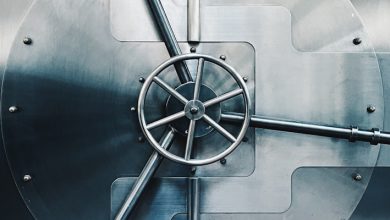How to Use Technical Analysis to Time Your Crypto Trades

- Introduction to Technical Analysis in Crypto Trading
- Key Concepts and Indicators Used in Technical Analysis
- Understanding Price Charts and Patterns
- Utilizing Moving Averages and RSI in Crypto Trading
- Identifying Support and Resistance Levels for Entry and Exit Points
- Tips and Strategies for Effective Timing of Crypto Trades
Introduction to Technical Analysis in Crypto Trading
Technical analysis is a method used by traders to evaluate and forecast the future price movements of assets, such as cryptocurrencies. By analyzing historical price data and market statistics, traders can identify patterns and trends that may indicate potential opportunities for profitable trades. In the world of crypto trading, technical analysis plays a crucial role in helping traders make informed decisions about when to buy or sell their digital assets.
Key Concepts and Indicators Used in Technical Analysis
When using technical analysis to time your crypto trades, there are key concepts and indicators that you should be familiar with. These tools can help you make informed decisions based on market trends and patterns. Here are some of the key concepts and indicators used in technical analysis:
- Trend lines: Trend lines are used to identify the direction of a market trend. They can help you determine whether the market is bullish (upward trend) or bearish (downward trend).
- Support and resistance levels: Support levels indicate a price point at which a cryptocurrency is likely to stop falling and start rising, while resistance levels indicate a price point at which a cryptocurrency is likely to stop rising and start falling.
- Moving averages: Moving averages are used to smooth out price data and identify trends over a specific period of time. They can help you determine the strength and direction of a trend.
- Relative strength index (RSI): The RSI is a momentum oscillator that measures the speed and change of price movements. It can help you determine whether a cryptocurrency is overbought or oversold.
- Volume: Volume refers to the number of cryptocurrency units traded over a specific period of time. High volume can indicate strong market interest, while low volume can indicate weak market interest.
By understanding and utilizing these key concepts and indicators, you can improve your ability to time your crypto trades effectively. Keep in mind that technical analysis is just one tool in your trading toolbox, and it should be used in conjunction with other forms of analysis to make well-rounded trading decisions.
Understanding Price Charts and Patterns
Understanding price charts and patterns is essential when utilizing technical analysis to time your crypto trades effectively. Price charts provide valuable insights into the historical price movements of a particular cryptocurrency, allowing traders to identify trends and patterns that may indicate future price movements.
By analyzing price charts, traders can spot patterns such as head and shoulders, double tops, triangles, and flags. These patterns can help traders predict potential price movements and make informed trading decisions. Additionally, understanding support and resistance levels on price charts can help traders determine entry and exit points for their trades.
When analyzing price charts, it is crucial to pay attention to key technical indicators such as moving averages, Relative Strength Index (RSI), and MACD. These indicators can provide additional confirmation of potential price movements and help traders validate their trading strategies.
In conclusion, mastering the art of interpreting price charts and patterns is a fundamental aspect of successful crypto trading. By utilizing technical analysis effectively, traders can improve their ability to time their trades and maximize their profits in the volatile cryptocurrency market.
Utilizing Moving Averages and RSI in Crypto Trading
When it comes to utilizing moving averages and RSI in crypto trading, it is essential to understand how these technical indicators can help you make informed decisions. Moving averages are used to smooth out price data and identify the overall trend of an asset. By looking at different time frames, such as the 50-day or 200-day moving average, traders can gauge the strength of a trend and potential reversal points.
On the other hand, the Relative Strength Index (RSI) is a momentum oscillator that measures the speed and change of price movements. It can help traders determine overbought or oversold conditions in the market, indicating when an asset may be due for a reversal. By combining moving averages with RSI, traders can get a more comprehensive view of the market and make better trading decisions.
When using moving averages and RSI in crypto trading, it is crucial to look for convergence or divergence between the two indicators. Convergence occurs when both indicators confirm a trend, providing a strong signal for traders to enter or exit a trade. Divergence, on the other hand, can indicate weakening momentum and potential reversal points.
By understanding how to interpret moving averages and RSI in conjunction with each other, traders can improve their timing of crypto trades and increase their chances of success in the market. It is essential to practice using these technical indicators and develop a trading strategy that suits your risk tolerance and investment goals.
Identifying Support and Resistance Levels for Entry and Exit Points
Identifying key levels of support and resistance is crucial when it comes to timing your cryptocurrency trades effectively. Support levels are price points where a downtrend can be expected to pause or reverse, while resistance levels are where an uptrend may stall or reverse. By identifying these levels, you can determine optimal entry and exit points for your trades.
One method to identify support and resistance levels is through the use of technical analysis tools such as moving averages, trend lines, and Fibonacci retracement levels. These tools can help you pinpoint areas where buying and selling pressure is likely to be concentrated, giving you valuable insight into potential entry and exit points for your trades.
When looking for support levels, pay attention to areas where the price has previously bounced back from a decline. These levels can act as a floor for the price, providing a potential entry point for a long trade. On the other hand, resistance levels are areas where the price has struggled to break through in the past. These levels can be seen as a ceiling for the price, offering a potential exit point for a short trade.
By incorporating support and resistance levels into your technical analysis, you can improve your timing when it comes to entering and exiting cryptocurrency trades. This can help you maximize profits and minimize losses, ultimately leading to more successful trading outcomes.
Tips and Strategies for Effective Timing of Crypto Trades
When it comes to timing your crypto trades effectively, there are several tips and strategies that you can employ to maximize your profits and minimize your risks.
- One key tip is to pay attention to market trends and patterns. By studying historical price data and chart patterns, you can identify potential entry and exit points for your trades.
- Another strategy is to use technical indicators such as moving averages, RSI, and MACD to help you make informed decisions about when to buy or sell a particular cryptocurrency.
- It is also important to consider external factors such as news events, regulatory developments, and market sentiment when timing your trades. These factors can have a significant impact on the price of cryptocurrencies.
- Diversifying your portfolio and avoiding putting all your eggs in one basket can help spread out your risk and increase your chances of success in the crypto market.
- Finally, it is essential to have a clear trading plan and stick to it. By setting specific goals, risk management strategies, and exit points, you can avoid making impulsive decisions based on emotions.
By following these tips and strategies, you can improve your timing of crypto trades and increase your chances of success in the volatile cryptocurrency market.



